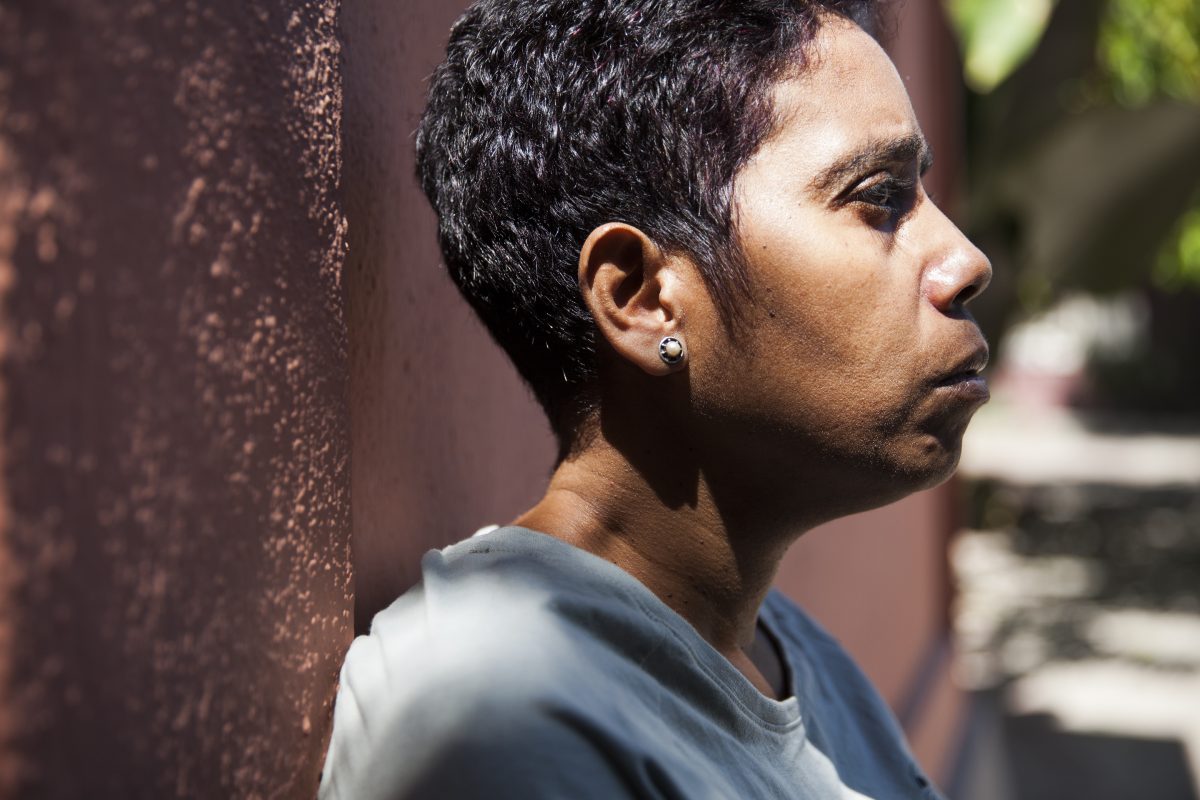“I just can’t control it,” explains Bob as he flicks his Juul, a brand of e-cigarette, as if flicking the ash off a lit cigarette. It was week eight of spring term 2017, and the day after a seizure episode that occurred at DIY Tea House five minutes away from where he lived.
Bob, a Taiwanese international student studying at the University of Oregon, suffers from epilepsy. Epilepsy is caused by an abnormal pattern of neuron activity. Such an imbalance of nerve signaling causes either an abnormally high level of excitatory neurotransmitters or an abnormally low level of inhibitory neurotransmitters, both of which trigger epilepsy.
“Coming to a foreign place where my family back home are expecting me to earn a degree within four years is enough pressure on my shoulders,” says Bob. “Competing with local students with English being my second language discourages me every day, but it’s worth it for them.”
Many international students misinterpret their hidden disability as a learning barrier tied to a mental disorder, and the Americans Disabilities Act states that faculties are not allowed to ask students about their disability condition on the grounds of possible discrimination complaints, which makes it difficult for these students to get in touch with the Accessible Education Center for further assistance. A study by the Journal of International Students found that international students feel more hesitant to seek professional mental health help than local students because of their own cultural view on disabilities as “a real taboo.”
The international students with hidden disabilities at UO are capable of taking on a new perspective of understanding themselves, and how they coexist with a disability they were never exposed to in their culture. Part of the mission of the AEC at UO aspires to create a community to “sustain physical, curricular and informational environments that are informed by and responsive to the diverse characteristics and experiences of students with variations of ability.” Incorporating an extension of their services by connecting international students with medical learning barriers to an appropriate channel of support allows students to better understand the importance of their mental and physical health in a positive environment. Acting as a support center at the UO, the AEC serves as an effective channel in helping international students connect with medical professionals who will offer services. It also provides students struggling with learning inside the classroom support in the form of accommodations. Challenges include disabilities or personal reasons. A student can also request permission to record lectures in class and whether a student can be their peer notetaker. It’s aimed at proposing pragmatic test-taking ways for students who are familiar with how their disability affects them. And with the assistance of the counseling center at the UO, students can gain a grasp of how they should handle and minimize such effects in the future by working against them academically.
However, cultural differences in recognizing psychiatric disabilities among international students remains a barrier. For international students with medical learning barriers and poor academic standing, there’s an absence of understanding one’s own hidden disabilities due to cultural traditions. Some Eastern-Asian cultures still view hidden disabilities as mental illnesses and those who have them are regarded as disabled entirely. This stigma falls heavy on international students, and most go through college without knowledge of a center such as the AEC. For Bob, visiting the center was, “one of the best decisions I made while studying in the U.S.”
Soon after week eight of spring term, Bob realized his memory and cognitive functioning had worsened since the seizure. He visited the AEC a day later, and within an hour of speaking with an advisor, learned the root of both his health and academic issues. Besides epilepsy, Bob’s diagnosis also included Attention Deficit Hyperactivity Disorder. Following this discovery, he requested that his academic adviser play a larger role in his education.
Among other medication for treating epilepsy, Bob has been taking Tegretol for as long as he could remember. Tegretol is an anticonvulsant medication used to treat epilepsy. While it has proven effective in reducing the abnormal balance of nerve activity, it also has negative cognitive side effects, affecting parts of the brain like attention span and memory.
The advisor concluded the Taiwanese student suffered from an illness which remains “out of the reach of the Accessible Education Center’s support.” The AEC offered an extended time in exams and a suggestion of making the Taiwanese student’s two out of three classes pass-no-pass in order to avoid probation. Additionally, with the help of counseling services at the UO, the AEC was able to put Bob in contact with a neurologist in Eugene. Indeed, without the proper guidance from a medical professional, international students may not fully comprehend how extensive of an impact hidden disabilities have on their lives.
“Although they had provided me with accommodations as an immediate solution to my current issues,” Bob says, “it did not help me tackle long-term struggles as a student with epilepsy, meaning down the road I’ll need to seek out more medical advice.”
Overall, the AEC encourages faculty to share their “observation/concerns directly with the student” if they have reason to believe that a student has a disability and is struggling in a classroom environment. At any point of the process, students maintain the right to choose not to disclose their disability to anyone, regardless of the reason. Students can work with the AEC to address their academic struggles due to any disabilities, including hidden disabilities. The AEC has adopted a “universal design for learning” framework, which aims to help improve student learning outcomes through restructuring traditional classroom activities catered to three aspects of learning: the “what” of learning, the “how” of learning and the “why” of learning. The understanding of the “what”, “why” and “how” of learning are crucial for the AEC to assist international students in becoming cognizant of implications surrounding their hidden disabilities.
A main concern with helping students identify hidden disabilities is their understanding of what they are, and international students with various cultural backgrounds may not have the same understanding of hidden disabilities as local students in the U.S. This poses a great disadvantage for international students, according to Emmanuel Manalo, a professor of educational and cognitive psychology in Kyoto with expertise in learning and teaching strategies. International students underutilize the available support services and resources, Manalo stated, due to their “unfamiliarity with the nature of and processes involved in the services offered.”
International students with non-visible disabilities experience greater obstacles than students with physical, sensory or mobility-related disabilities because, as Manalo has distinguished in his research, the nature of hidden disabilities is “usually indistinguishable from students without any form of disability.” These disabilities invisible to most people and studies have shown significant mental health problems related to hidden disabilities. Manalo investigated these studies and concluded that the effects of psychological distress with academics includes higher levels of assessment anxiety, tendency to failure, lower GPA achievements, poorer self and resource management, poorer resilience and persistence.
“These effects are congruent with a core element in the definition of psychopathology,” Manalo says. “It has ‘adverse consequences’ on the affected individual’s wellbeing and ability to effectively function in everyday life.”
In Congress, the Individuals with Disabilities Education Act of 1975, Section 504 of the Rehabilitation Act of 1973 and the ADA enacted by Congress in 1990 mandate educational services and protect the civil rights of students with disabilities. The Rehabilitation Act of 1973, specifically, secures protection to any person with a disability from discrimination based on their impairment as well as their rights as a protected class. An individual with a disability is defined as “a person who has a physical or mental impairment that substantially limits one or more major life activities, a person who has a history or record of such an impairment or a person who is perceived by others as having such an impairment,” according to the ADA.
This suggests that a person with a hidden disability qualifies as having a disability because it encompasses learning and psychiatric disabilities. Since enacting these laws, a nationwide surge in college students with hidden disabilities became ubiquitous, according to Lorraine Wolf, the Assistant Clinical Professor of Psychiatry at the Boston University School of Medicine.
She describes the greatest increase of hidden disabilities affecting those with “learning disabilities, ADHD and psychiatric disabilities,” and explores a number of obstacles these students face as they progress to higher education.
The present issues that students with medical learning barriers experience involve both intrinsic and extrinsic factors, ranging from psychological effects to restrictions student’s face in their learning environments due to their disabilities. Wolf concludes, “[these] are important factors that must be understood as institutions of higher education strive to promote access and provide effective support services.”
“If it wasn’t for going to the AEC, I would not be able to pursue my education at the UO,” Bob reflects. Moving forward, one of his deepest reservations concerns what his hidden disabilities means for him in graduate school. The awareness and understanding of hidden disabilities not only remains controversial and inadequately researched within the field of education, it also affects how mental health is viewed across different cultures.
“Till this day, my mother still thinks having epilepsy for me is temporary,” Bob says. “I am thankful to have learned the truth through the AEC; that epilepsy is something I can to learn how to live with.” Without professional support and accommodations from universities, Bob’s academic standing would still be affected. Although his fear for pursuing graduate school is apparent, he has found it much more manageable with the help of the AEC.
“Having epilepsy is a part of who I am,” Bob says, smiling, “and I am okay with that.”










![[Photo Courtesy of the Lara Family]
Ruben embraces his beloved childhood goat, Katrina.](https://ethos.dailyemerald.com/wp-content/uploads/2025/05/katrina-1-1060x1200.jpg)


